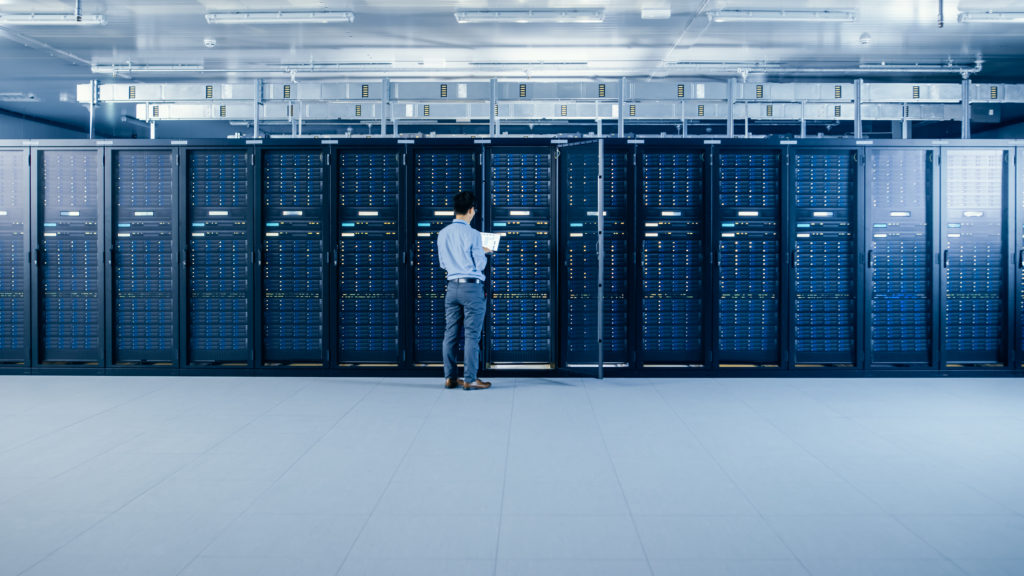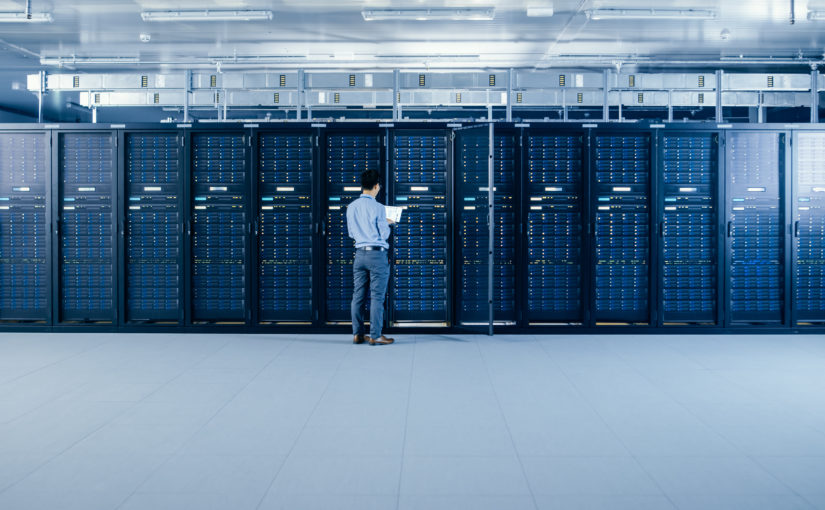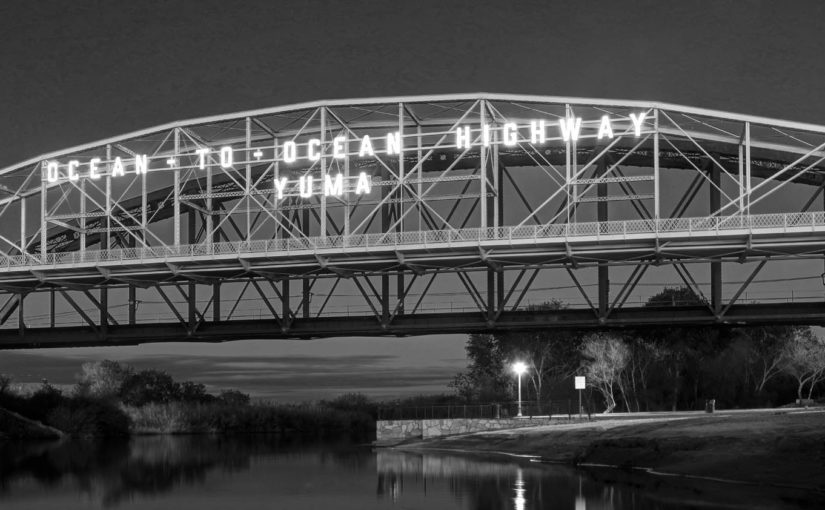Aging Controls Block Demand Response Revenue

We’re excited to have our technology partner Energy IQ contribute this guest column for The Current.
As 2026 capital plans take shape, one issue keeps showing up in industrial and large commercial facilities: aging control infrastructure. This keeps companies from earning more demand response (DR) revenue because they cannot seize opportunities.
For when capacity markets tighten and DR programs pay more, facilities that respond fast are rewarded while those that don’t can be effectively sidelined. Such is the case in PJM, for example, where capacity prices have jumped sharply and FERC has approved a broadening of the window for DR participation to enhance grid reliability and resource adequacy.
Why legacy systems struggle
Missed opportunities often come down to a customer’s controls. Slower respondents tend to rely on building management systems (BMS) and supervisory control and data acquisition (SCADA) systems designed for monitoring, trending and alarms; not for fast, coordinated curtailment across multiple loads.
This dependence creates four common barriers to DR participation:
- Slow polling/refresh rates. If the system only updates every 30–60 seconds, it can’t reliably meet DR program response requirements that expect action in minutes (or sometimes less).
- Limited connectivity. Older controls often can’t talk natively to modern DR platforms or aggregators without an intermediate layer.
- Manual steps. When operators have to make the calls, flip the points or pick the loads, human delay and human error enter the process—this is where revenue gets lost.
- Insufficient event data. Without automated logs of what was shed, when and for how long, settlement and payment can be slow or disputed.
The result: facilities with perfectly good mechanical and electrical systems still miss out on what could be six-figure (and in some industrial cases seven-figure) annual DR opportunities, simply because the controls can’t prove or execute the event.
A practical modernization pattern
The good news is that most sites don’t need a full rip-and-replace to participate. Rather, a common approach in DR programs is to insert an integration/translation layer that does four jobs:
-
- Bridges between existing building automation system (BAS)/SCADA and the DR platform (for example, a CPower-managed program);
- Issues automated, pre-engineered load-shed commands in minutes;
- Coordinates with production or comfort sequences so operations aren’t disrupted; and
- Generates real-time visibility and post-event data so settlement is straightforward
This middle layer is what brings an older plant “up to program speed” without a capital-heavy BMS replacement.
Illustrative result
In one industrial project, CPower worked with Energy IQ to implement an integration layer at a 100 MW steel plant. This solution allows the site to predefine a load-shed sequence and reliably drop a large portion of load (30 MW) in under 10 minutes, making participation in DR programs requiring faster responses viable and creating a meaningful new revenue stream. The key enabler was the modernization between the facility and the DR platform.
What to evaluate
For organizations participating in, or considering, programs like Synchronized Reserves, Capacity Performance, or other fast-responding DR products, the most useful next step is a controls-readiness assessment:
-
- Current polling/refresh rates
- Protocols available (BACnet/IP, Modbus TCP, MQTT, etc.)
- Loads that can safely be automated
- Data available for M&V/settlement
- Integration points with the DR platform
From there, the team can right-size an integration project and prioritize “fastest revenue” loads first.
One Final Point
Grid operators reward speed, automation, and reliability. Facilities that demonstrate those three things will continue to have access to higher-value DR opportunities. Conversely, facilities limited to manual response or slow controls will find themselves watching from the sidelines even if their actual load is large.
AI, Data Centers and the Grid’s “Holy Grail” – Here are 4 Takeaways on Demand Response from GridFuture

While demand response has long played a vital role in energy management, its importance was on full display at CPower’s GridFuture 2025, hosted in Washington, DC, in early August, as stakeholders across the industry noted its importance in tackling unprecedented grid challenges. Paying customers to use less electricity when demand peaks or electricity prices are high is increasingly seen as an efficient means of supplying the power needed to support innovation and spur economic growth.

1. Demand response is a $15B engine for grid and economic resilience.
“This is a pivotal moment in our country’s energy history for demand response. But this isn’t just CPower’s story – it’s a growing chorus across the energy sector,” CPower CEO Michael D. Smith said at GridFuture 2025, the company’s annual thought leadership conference focused on advancements in demand response, distributed energy and virtual power plants.
“It’s because of everyone in this room, and many more out across our ecosystem, that we can drive meaningful outcomes for our customers, for the grid, for our communities and our economy. And that collaboration is essential as we continue to face new challenges as an industry.”
With demand growing faster than new capacity can be built, faster-to-deploy solutions such as demand response bridge the expanding gap between supply and demand. For example, from June 1 to August 1, CPower and its customers across the US provided ~34,000 MWh of load relief during the hottest days of summer, stabilizing the grid and keeping our communities going.
“Demand response acts as the grid’s great economic shock absorber. In times of volatility or disruption, it helps smooth out price spikes while freeing up capital that customers can reinvest elsewhere, including job creation,” Smith said.
Properly utilized, demand response could deliver $15 billion in annual savings nationwide, providing a strategic lever for businesses and the economy. “Great value comes from taking existing assets and leveraging them more effectively and efficiently,” Smith said.

2. The Knowledge Economy demands a smarter, more dynamic grid.
The factor driving the call for more capacity and the biggest economic gains also offers the most immediate and efficient solution: artificial intelligence. More specifically, data centers for AI compute companies, hyperscalers, crypto miners and other large energy users can become grid assets through demand response.
“Data centers are not new, but what is new is the way that AI is pushing the load associated with data centers. AI is changing what load growth looks like and has raised questions about what the next five to 10 years will look like,” said GridFuture 2025 keynote speaker Morgan Scott, vice president, Global Partnerships and Outreach at EPRI.
From transportation to manufacturing to healthcare, AI impacts every industry, requiring exponentially more electricity. “This is creating the knowledge economy, with data centers as knowledge factories. It’s imperative to ensure they have the power they need so that they continue to drive economic growth,” Scott said.
Touching on EPRI’s DCFlex initiative, Scott noted that data centers can leverage flexible energy from energy assets like on-site generation, thermal energy storage, cooling systems or compute workload.
At GridFuture 2025, innovators from Mercury Computing, Emerald AI, Bentaus and Miratech elaborated on unlocking flexibility from data centers. They explored how new technologies enable data centers to adjust power use dynamically, increasing their value to the grid.

3. AI loads are the new frontier of grid flexibility.
“The narrative is starting to change to realizing we can bring stability and resiliency to the grid by working with CPower and others to flex load,” said Bob Davidoff, CEO and Founder, Bentaus.
AI compute load is particularly flexible because power consumption can be adjusted around workloads such as training, fine-tuning and inference. “We need to stop thinking of AI as inherently inflexible and start seeing it for what it is: the Holy Grail of demand-side management,” said Varun Sivaram, CEO, Emerald AI.
“Most end users are focused on results, not where the processing happens. That gives us the power to shift compute in ways that maximize the infrastructure we’ve already built,” he continued.
Some markets connect data centers to the grid sooner for participating in demand response. “Time-to-power is critical to data centers. That is what has allowed the idea of flexible data centers to take root,” said Monty Prekeris, Co-Founder, Mercury Computing.
In some cases, demand response may be required as utilities and grid operators struggle to accommodate large data centers and other large loads.
For example, Texas Senate Bill 6 gives the Electric Reliability Council of Texas (ERCOT) the authority to curtail energy users with electric loads over 75 MW during grid emergencies, such as summer heatwaves when demand peaks or winter storms when power supply can wane.

4. There is no year-round grid reliability without demand response.
Traditionally used to keep the lights on during sweltering summer days, demand response has become a year-round resource with extreme weather creating demand peaks across all seasons. Utilities and grid operators also turn to demand response resources more frequently and on shorter notice to balance the grid amidst rapid shifts in supply or demand due to intermittent generation or other factors.
As demand response has become more accepted and encouraged, it has also become increasingly automated and optimized. And it has expanded beyond curtailed load, encompassing distributed generation, storage, microgrids, smart thermostats, EV chargers and other energy assets. The resulting multitude of complex demand response programs spanning capacity, energy and ancillary services makes simplification paramount.
“We literally have a Saudi Arabia of latent flexibility capability that we have yet to unleash, and we need to do that given the anticipated demand growth in our country. But to leverage it, we need to engage with customers without interrupting their business,” said Ken Schisler, Chief Legal and Regulatory Officer, CPower, in introducing a customer flexibility panel discussion at GridFuture 2025.
Panelists from commercial real estate, transportation and manufacturing shared how they have tailored their load management strategies to their specific industries, as well as best practices for navigating market participation and steps for optimizing their energy assets in grid service programs.
Reflecting on lessons learned from the panel and other GridFuture 2025 presenters, Smith noted the collective impact. “We’ve gained clarity on where our industry is, the vision for what it could become and what actions the industry needs to bridge that gap.”
Glenn Bogarde
As CPower’s Chief Sales and Marketing Officer, Glenn has led the company’s sales team on a nationwide mission to help customers unlock the most value from their flexible energy assets. Glenn has more than 20 years of sales experience in the enterprise software and energy industries.
Seasonal Readiness 2024
Report: Demand response is critical to enabling the energy transition and ensuring a reliable grid

Recently released research shows that mounting reliability risks make demand response (DR) increasingly important as the grid transforms. An aging grid dominated by solar and wind power, battered by storms and fires and struggling to supply new needs like EVs and electric heat pumps, needs the flexibility that DR provides.
“Paradigms for the generation and delivery of electricity are evolving away from a centralized network with predictable power flows toward a distributed and dynamic grid, creating many challenges and opportunities for utilities and other entities involved in the electricity value chain,” according to a new report about grid reliability challenges published by Wood Mackenzie and CPower. “At the heart of these changes is how reliability is assured when the grid is most stressed, like when customer demand peaks during heat waves, natural disasters or extreme weather events.”
Based on insights from analysts at Wood Mackenzie, the report shows that DR programs have proven to be an important resource for ensuring reliability amidst grid challenges in the past, but that such support may not always be available. Analysts explain how low capacity pricing and cumbersome rules on DR participation threaten the future of DR programs and the ability to use distributed energy resources (DERs) to help the grid.
If energy users were to stop participating in DR, analysts note, utilities and grid operators would lose their most reliable resource during emergencies as well as a resource that can provide much-needed flexibility year-round.
Such year-round flexibility is imperative because the proliferation of intermittent renewable resources, the retirement of fossil-fuel generators, and the electrification of vehicles, heating and other key energy needs are straining the grid, making it difficult to balance supply and demand.
“As the grid’s needs continue to evolve, particularly with the growth of other types of distributed energy resources (DERs) besides DR, such as solar generation, battery storage, and electric vehicles, DR is an increasingly important part of the resource stack in energy markets,” according to the report from Wood Mackenzie and CPower.
The North American Reliability Corp. recently issued a similar warning about the importance of flexibility in mitigating risks to grid reliability.
“System operators and planners should ensure that sufficiently flexible ramping/balancing capacity is available to meet the needs of changing patterns of variability and new characteristics of system performance. In future decades, growing storage and demand-side flexibility may help mitigate the concerns for flexibility and attention will turn to multi-day energy concerns, but intraday flexibility remains important during this transition,” according to NERC’s 2023 Electric Reliability Organization (ERO) Reliability Risks Priorities Report.
Today’s tech-enabled DR can play a key role in energy, ancillary services and other flexibility markets. But policymakers must eliminate barriers like unsustainably low pricing and unworkable administrative complexities to unlock the full flexibility of DERs, according to Wood Mackenzie and CPower’s report. To do so, the paper’s authors suggest market reforms such as revising compensation methods for DR resources, fixing capacity accreditation and introducing a price floor for DR.
If you would like to learn more about the research and recommendations from Wood Mackenzie and CPower, you can download a copy of the report here: Ensuring Grid Reliability with DERs.
Kenneth Schisler
Ken leads CPower’s regulatory and government affairs team, having previously served in similar roles at both Vicinity Energy and EnerNOC/Enel. He brings nearly three decades of policy leadership on innovation in clean and advanced energy technologies and collaborates with public officials, regulators, power exchange and system operators, academia and industry peers to unleash the potential of demand-side resources.
Seasonal Readiness 2023
Seasonal Readiness 2022
Data Centers Have the Grid’s Answer for the Fourth “D”

Much has been made in the energy industry during recent years of the “3 Ds,” the macro trends of digitization, decentralization, and decarbonization that have driven the electric grid’s transformation toward a cleaner, more dependable, and efficient future.
The 3 Ds are generally considered to be positive trends rooted in good intentions for the grid and society.
There is, however, a fourth “D” that has been nothing short of a costly troublemaker for the grid since its inception and threatens to undermine every good deed the original 3Ds seek to accomplish.
“Disruption” has been the grid’s ever nemesis since Thomas Edison fired up electricity’s first electric grid in 1882 at Pearl Street Station in lower Manhattan. Like any arch-villain, disruption has a knack of showing up at the most inconvenient of times, particularly when the grid is already vulnerable.
Consider the most disruptive grid events of the last decade. Most were weather-related and resulted in blackouts.
Actually, we don’t have to flip too far in the history book for evidence of weather-related disruption pushing the grid to the brink of total failure. The tragedy this past February in Texas when record winter temperatures forced the ERCOT grid to suffer its first blackouts in a decade is a prime example of disruption’s wicked handiwork.
The California blackouts in August of 2020 that took place during an extreme heatwave in the western US are another example and prove that disruption doesn’t partake in an offseason.
Unfortunately for the grid, disruption is a devil that takes many forms. The COVID pandemic is a prime example.
The lockdowns during 2020 led to electric loads shifting from commercial buildings to residential, which caused grids across the US to work overtime to ensure electric supply and demand remained in balance.
Like death and taxes, disruption may very well be an inevitable fate for the grid. Yet throughout history, fate has had a way of swinging favor back toward the good guys.
Demand response, the practice by which organizations are financially rewarded for shifting load from the grid during times of stress, is a case in point.
We’ve previously written how demand response has been in the US electric grid’s defense arsenal for decades. Today, with the proliferation of distributed energy resources (DERs) adding to that arsenal, demand response has proven to be an even greater thwart to grid disruption than ever before.
Data Centers, with their penchant for owning on-site DERs such as backup generators and energy storage, are in a prime position to participate in demand response and help the grid fend off disruption when the last (or any) of the 4 Ds rears its ugly head.
Across the country, an increasing number of data center organizations are realizing how helping the grid pays immeasurable dividends for their local communities.
During February’s grid collapse in Texas–which tragically resulted in hundreds of citizens losing their lives–data centers proved to be the local heroes.
Data centers participating in demand response programs provided flexible energy resources at the critical times when the ERCOT grid needed them. These resources played an integral role in keeping the grid from a total collapse, which ERCOT has stated was minutes away and would have kept much of the Lone Star State in the dark and freezing for weeks.
For their helping the ERCOT grid, these Texas data centers earned a substantial demand response revenue payment. But it’s their stewardship of community sustainability that should be noted and applauded. Fortunately for data centers, sustainability recognition for demand response participation is starting to garner measurable notice.
Demand response and all forms of demand-side energy management allow the grid to continue its transition from a fossil-fuel-dominated past to a renewable energy future.
Disruption, be it of the foul weather variety or some other adversarial pill will be waiting in lie around every bend of our journey to energy’s future. Within their sophisticated suite of behind-the-meter energy assets, data centers have the antidote to disruption’s poison.
The modern world relies on data centers’ megabytes. The grid and local communities nationwide are counting on data centers megawatts.
To learn more about how data centers can help the grid, reduce their carbon footprint, and improve their local communities’ sustainability, download CPower’s latest ebook: “A New Age of Demand-Side Energy Management.”
SOTM 2021 Webinar Series
Seasonal Readiness 2021
Arizona’s Largest Utility Ramps its Demand Response program to Pursue Carbon-Free Mission
The largest electric utility in Arizona is making strides toward a more sustainable future and it’s clear demand response is part of the plan.
Arizona Public Service (APS) is the owner and operator of the country’s largest producer of carbon-free electricity–the Palo Verde Generating Station.
Currently, the utility generates clean, reliable electricity for 1.3 million homes and businesses in 11 of Arizona’s 15 counties and boasts a current energy fuel mix that is 50 percent clean.
50 percent clean energy in 2021 is impressive enough, but APS CEO Jeff Guldner sees an even cleaner future and has pledged to cease all coal-fired generation in the APS service territory by 2031 and for the utility’s fuel mix to be 100 percent carbon-free by 2050.
To get there, APS plans to call on a generation portfolio that is 45 percent renewable in just nine years.
To help bridge the present and future, APS is counting on its own Peak Solutions demand response program to ensure its grid remains reliable when stressed with heavy electrical demand.
Launched in 2010, the Peak Solutions program engages commercial and industrial customers in voluntary energy conservation measures when demand for energy peaks on APS’s system, particularly during Arizona’s scorching summers.
The program also helps maintain lower-cost power for all customers.
As APS ramps up its drive to a carbon-free future, they’re also ramping up their demand response program and the financial rewards participating commercial and industrial organizations will earn for voluntarily reducing their electricity consumption when the demand on the APS grid is high.
The APS Peak Solutions aims to include participants both small and large evidenced by its minimum load commitment of just 10 kW instead of the more customary 50 kW minimum required by most commercial demand response programs in the US.
By not having any penalties for non-performance, another atypical demand response program parameter, APS is further making Peak Solutions attractive to organizations who have never before participated in demand response.
APS’s CEO Jeff Guldner knows that plans and programs aren’t enough to attain a sustainable future in Arizona. “Achieving and realizing the full benefits of a completely clean energy mix will take partnership,” he said in APS’s published clean energy commitment document, “It’s something for all of us, by all of us.”
To learn more about demand response and the APS Peak Solutions program, click here.











